Thursday, September 27, 2012
Wednesday, September 19, 2012
Monday, September 17, 2012
Friday, September 14, 2012
8 Amazing Drowned Buildings
Buildings of different purposes, rising out of lakes and rivers, submerged in gallons of water - the places where people once lived and worked, a homes to weeds and fishes now. These buildings were flooded and drowned by men's own doing, in their hurry to change nature's path for dams and reservoirs. Churches, monasteries, palaces and fortresses are usually occur as partly-submerged structures, which are popular among photographers and tourists.
1. St. Nicholas Church, Macedonia
 |
| link |
2. Church Of Altgraun In Lake Reschen, Italy
 |
| link |
Planning for a man made lake in this area began in the 1920’s by the Montecatini company, who wanted to build the reservoir for electricity. This proved difficult as they could not get proper support and met strong resistance from all towns involved.
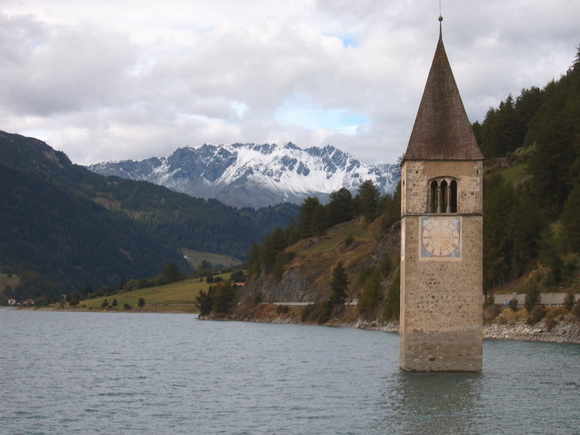 |
| link |
After years of delays and appeals to government officials, the villages of Graun and Reschen were submerged in 1950. A total of 163 homes were lost, including the famous church, whose clock tower still stands above 20 feet (6 m) of water, and has become a main attraction of the area. [link, map]
3. Church of Old Petrolandia, Brazil
Petrolandia is a town in Brazil near the river of Sao Francisco, which was moved - or at least part of it was - when a dam was built. The only thing left standing is the church, which is unusual and beautiful sight. [link]
3. Church of Old Petrolandia, Brazil
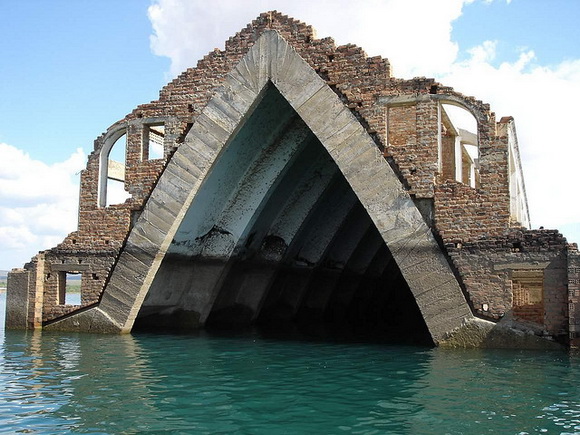 |
| link |
4. Kalyazin Bell Tower, Russia
 |
| link |
The Kalyazin Bell Tower is a Neoclassical campanile, rising to a height of 74.5 metres (244 ft) over the waters of the Uglich Reservoir on the Volga River opposite the old town of Kalyazin. The steepled belfry was built in 1796–1800 as part of the Monastery of St. Nicholas.
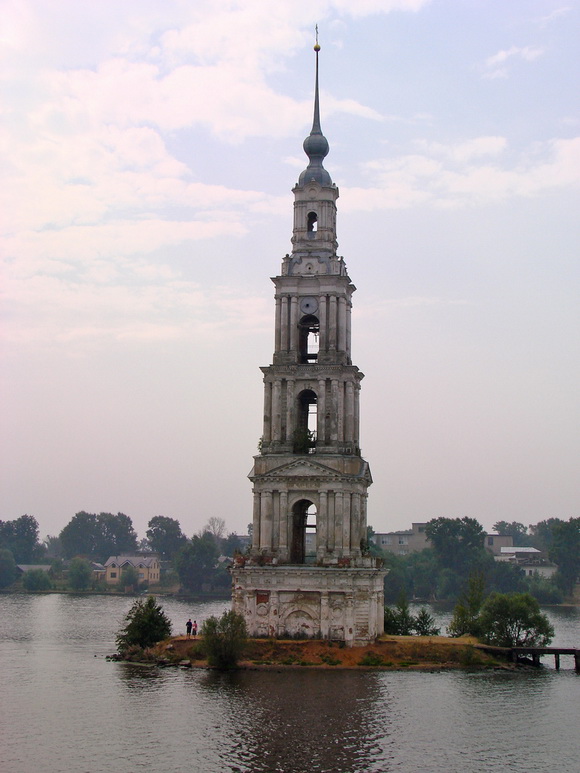 |
| link |
When Stalin ordered the construction of the Uglich Reservoir in 1939, the old part of Kalyazin, including several medieval structures, was covered by the waters. The structure became the main object of touristic interest in the east of Tver Oblast, and an islet was shored up underneath. It has a small pier for boats. [link, map]
5. Jal Mahal Palace, India
 |
| link |
Jal Mahal (meaning "Water Palace") is a palace located in the middle of the Man Sagar Lake in Jaipur city, the capital of the state of Rajasthan, India. Built to be a pleasure palace for the royal family in 1799, Jal Mahal Palace is an extremely romantic place with its intricate architecture casting beautiful reflections in the calm waters of the Man Sagar Lake. The lake eco system is a favorite home of a number of migratory and resident birds.
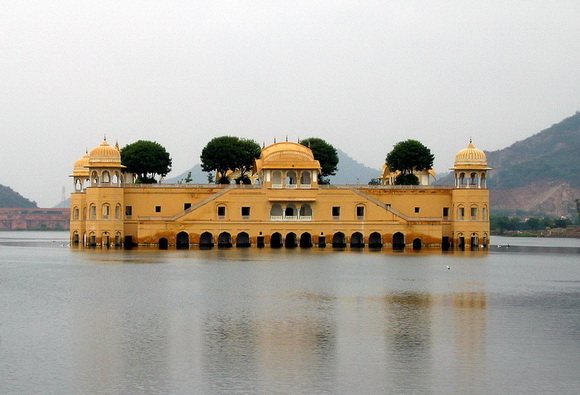 |
| link |
Jal Mahal has been restored recently and is now open for public. The first four floors of Jal Mahal are under water and only the top floor is above the water level. Inside the monument is the roof top garden in white marble - Chameli Bagh, blended with traditional Rajput architecture and contemporary flair, with fountains, water channels with carved niches, trees and scented flowers. [link, map]
6. Church of Mediano, Spain
 |
| link |
The Church of Mediano is a 16th century submerged church located in Mediano, a submerged municipality in La Fueva, province of Huesca, Spain. This church was flooded together with the entire village when the water reservoir of the same name was built in the 1960’s.
 |
| link |
The last inhabitants left the place when the water was already getting inside their houses. When the lake is full the depth at the base of the tower is approximately 30m (100 ft). [link, map]
7. Tricule Fortress, Romania
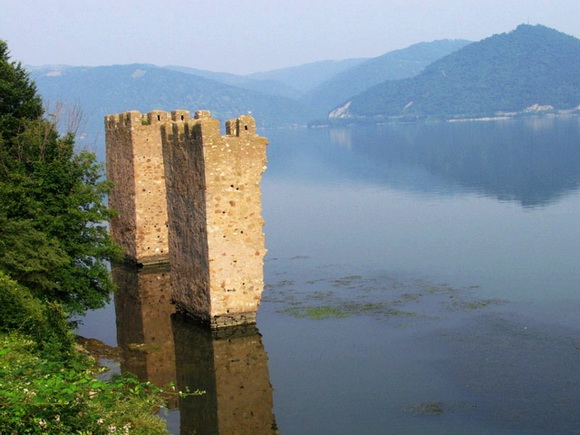 |
| link |
Tricule Fortress was built in 15 century to stop the Otoman expansion to west, the ruins are located near Svinita locality, at the border from Romania and Serbia.
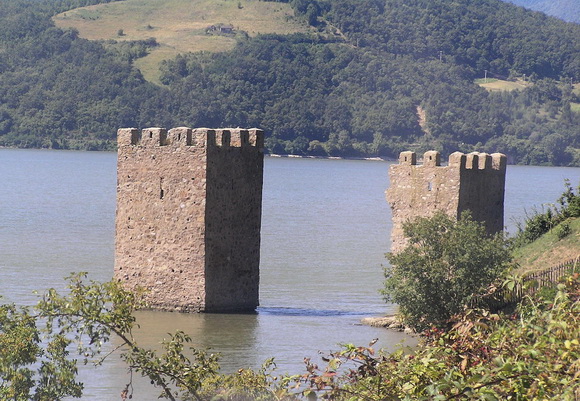 |
| link |
On the left side of the Danube, 4km from Svinita, there are three towers in a triangle shape. These had been standing on the steep slope before 1971, the articulation of the lake. Nowadays they seem to be flooded by the Danube and the tower of the south seems to be completely flooded. The towers are 10 and 11 m (33 and 36 ft) high. All of them were constructed of stone, standing there with the 1,40 m (5 ft) wide walls, having three levels in their interior. [link, map]
8. The Nativity Church, Russia
The Nativity Church was built at the end of 18th century (approximately in 1790) in Krokhino settlement. The church was located at the water’s edge on the coast of Lake Beloye, at the origin of the Sheksna River.
The Nativity Church was flooded when the Soviets began the construction of a hydroelectric plant. In the result of drowning the southern wall of the church in Krokhino is more destroyed if compared with the northern wall, but generally, the church is half-destroyed. Church in Krokhino became well-known because of the tourist routes that travel on Sheksna River. In 2009 the project on salvaging the church has been organized. [link, map]
Bonus: Reappeared Church of Potosi, Venezuela
Potosi, Venezuela hasn't been on anyone's travel radar much since 1985. That was the year when the town was deliberately flooded by the Venezuelan government to build a hydroelectric dam. That left most of the worthwhile souvenirs from Potosi rather soggy.
Severe droughts (2009-2010) in the region have resulted in an odd miracle, of sorts. The water levels in the man-made reservoir are so low that the town's previously submerged church is now completely above water and resting on dry land.
This 82-foot-tall church hasn't been seen in its entirety in 25 years. The good news is that visitors can now witness this beautiful church and marvel at the effects of El Niño. The bad news is 68% of Venezuela's power is hydroelectric. That means that the country is now experiencing an officially-declared energy emergency. [link, map]
8. The Nativity Church, Russia
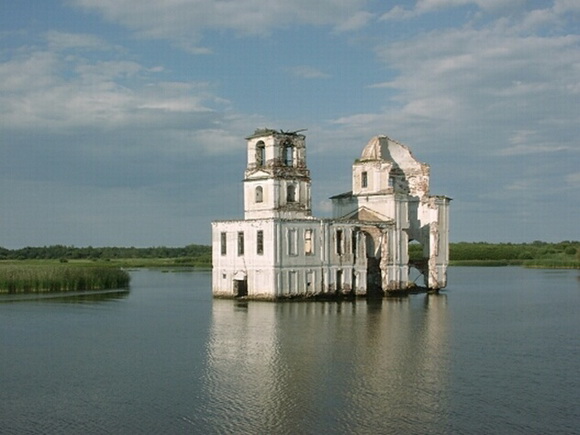 |
| link |
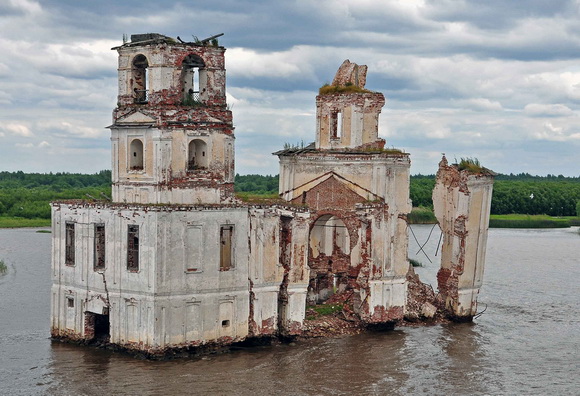 |
| link |
Bonus: Reappeared Church of Potosi, Venezuela
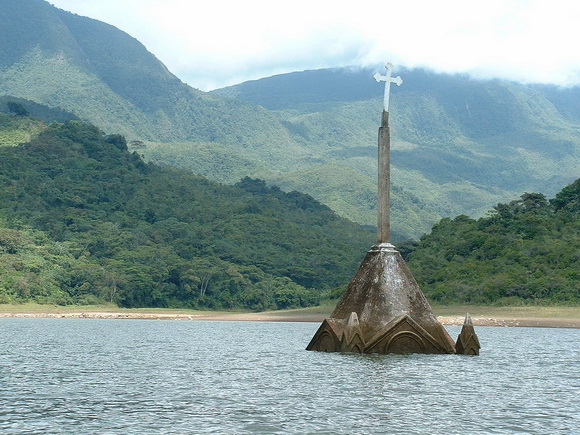 |
| link |
 |
| link |
 |
| Josefa Garcia, former resident of Potosi, walks by the first time after she leaves the town in front of the ruins of a church in the Andean town of Potosi (2010) link |
Wednesday, September 12, 2012
The Deepest Indoor Swimming Pool in the World
Located in Brussels, Belgium, Nemo 33 is the deepest indoor swimming pool in the world. Designed for divers, Nemo 33 was first conceived by John Beernaerts in 1996. Its doors would eventually open to the public on May 1st, 2004.
According to the Guinness World Records:
The Nemo 33 diving pool has a depth of 33 meters (108 ft) at its deepest point and contains around 2.5 million litres (550,000 gal, 4.4 million pints, 660,000 US gallons) of water. The facility, which opened in June 2004, is used for dive training, leisure diving, and research.
The water is kept at a constant 30 degrees Celsius (86 degrees Fahrenheit) thanks to a large array of solar panels. There are two ‘basins’ and three ‘pits’, the deepest of which is 6 m (19 ft 7 in) across and drops to 33 m (108 ft). There are underwater ‘caves’ for exploration and three air-filled diving bells that enable diving instructors to communicate with their charges without returning to the surface.
Subscribe to:
Posts (Atom)






































